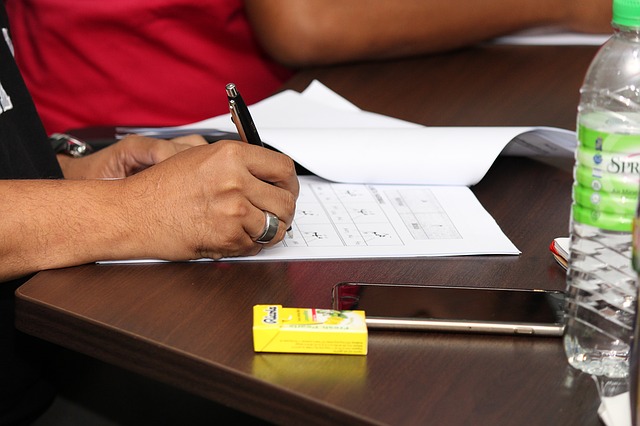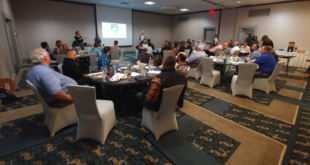Informal Interpretations Offer Assistance on Technical Questions
The informal interpretations featured in this post address NFPA 13, Standard for the Installation of Sprinkler Systems, early suppression fast response (ESFR) sprinklers. AFSA’s informal interpretations are provided to AFSA members by Vice President of Engineering & Technical Services Roland Huggins, P.E. and Manager of Fire Protection Engineering Tom Wellen, P.E. These opinions are provided for the benefit of the requesting party, and are provided with the understanding that AFSA assumes no liability for the opinions or actions taken on them.
Subject: Drop Ceiling Construction for ESFR Protection
QUESTION: “I have a warehouse project with a 59-ft deck and they want to install a drop ceiling at 45 ft and install an ESFR system with pendant heads. Is there any certain ceiling construction that is required for an ESFR pendant system? Can a standard acoustical tile grid system meet the requirements?”
ANSWER: In response to your questions we have reviewed NFPA 13, Standard for the Installation of Sprinkler Systems, 2016 edition as the applicable standard as well as FM Global Data Sheet 2-0 dated January 2014. Our informal interpretation is that NFPA 13 does not address ceiling construction or minimum required uplift pressures from fire. FM Data Sheet 2-0 was referenced for guidance since NFPA 13 does not address this question. Section 2.2.1.6 for ceiling slope of storage sprinklers. This says to install a flat, continuous false ceiling (see Appendix A for definition) over the affected area and for 20 ft beyond in all directions. The design of the false ceiling is to be constructed in accordance with Data Sheet 1-12, Ceilings and Concealed Spaces, and ensure it can withstand a minimum uplift pressure of 3 lb/ft2 with sprinkler protection provided below the suspended ceiling. Appendix A defines a false ceiling as: “A solid continuous sub-ceiling that is installed in accordance with Data Sheet 1-12, Ceilings and Concealed Spaces, and aligned parallel to floor level at a given vertical distance below the primary ceiling or roof. Sprinkler protection is installed under the false ceiling and designed in accordance with the occupancy-specific data sheet. The purpose of a false ceiling with sprinklers installed below it is to typically address hazards that can negatively affect sprinkler performance such as excessive clearance, excessive airflow velocities, excessive ceiling slope or loss of the heat plume through exhaust openings at ceiling level. Design the false ceiling to withstand a minimum fire plume uplift velocity pressure of 3 lb/ft2 Suitable ceiling materials include minimum 3/8-in. plywood or gypsum board as well as corrugated or sheet steel. If the false ceiling is made of ordinary plywood or other combustible construction, sprinkler protection may also be needed above the false ceiling (see DS 1-12). If the false ceiling is hung from the existing roof framework, ensure the roof can withstand the additional dead load.”
Subject: Open-Top Containers
QUESTION: “We have 15-ft high rack storage for HDPE plastic totes both empty and filled with metal parts. The totes are five sided with openings and open-top. Also, there are wood pallets with plywood sides both filled with metal parts and empty. What are the protection criteria for these commodities?”
ANSWER: In response to your question we have reviewed NFPA 13, 2016 edition as the applicable standard. Our informal interpretation is noted below. There are several issues to address regarding this application. The protection criteria cannot be provided since there are unknown details regarding the storage. Chapter 5 will give guidance on the classification of the commodity. The plastic bins will be addressed first. The metal parts can be classified as a Class I commodity. So when the metal parts are packaged inside polyethylene packaging, this doesn’t necessarily make it a Group A plastic commodity. This is shown in 5.6.3.4.1 number (6) that it meets the definition of a Class IV commodity when it contains greater than five percent and up to 15 percent by weight of Group A exposed unexpanded plastic. Thus, if you fall within the parameters of the Group IV commodity, then provide protection accordingly. If the weight or volume of Group A plastics is borderline or exceeds the Class IV parameters, then the commodity can be classified as unexpanded Group A plastic. When the plastic container is empty, the commodity would be unexpanded Group A plastic. Fire tests of commodities have shown that fires can take on burning properties of its packaging. This is mentioned in annex material in A.5.6.1.1 and indicates that classification is also affected by such factors as the primary storage or shipping container material, the amount of air space, and the location of the more hazardous materials within the container. For example, a Group A plastic product enclosed in a five-or six-sided metal container can be considered Class II, while a ceramic product heavily wrapped in tissue paper and placed in a corrugated carton could be Class III. In looking at this annex information, there are metal parts packaged in a Group A plastic five-sided storage bin. If the amount or volume of plastics exceeds those specified in the definition of a Class IV commodity, a fire involving the plastic bins may take on the properties of a fire involving unexpanded Group A plastics. Next are wood pallets with plywood sides both filled with metal parts and also when they are empty. This meets the definition of a Class III commodity in Section 5.6.3.3. Lastly, protection of open-top containers has limitations. Sections 16.1.7 and 17.1.6 indicate that the protection of open-top containers shall be considered outside the scope of Chapter 16 and 17. See Section C.12. This restriction on spray sprinklers applies only to rack storage. The bottom line is that open-top containers cannot collect water. The definition of open-top container is located in 3.9.1.19 as a container of any shape that is entirely or partially open on the top. The annex A.3.9.1.19 provides text to clarify that the containers can prevent water from running across the top to storage and down the flues and can also collect water. Number 3 addresses containers that can have wire mesh siding or large uniform openings along the bottom perimeter of each container, such that water enters the container at the same flow rate and discharges evenly into the flue spaces, should not be considered as an open-top container provided the contents of the container are not water absorbent and are not capable of blocking such container openings. The containers for this application appear to have openings where they would not be considered open-top containers. Without the openings, the container will prevent water penetration to a fire in lower levels where it is needed. Rack or flue collapse can also occur if too much water is collected. This is also supported by fire tests indicated under C.12 with open-top containers in the upper tier of storage and a portion of the third tier of storage produced an increase in sprinkler operation from 36 to 41 sprinklers and a more pronounced aisle jump and increase in fire spread in the main array. With that said, one has to determine if water will be collected in the containers. If the containers are arranged so that water will not collect in the containers below covered containers on top and water will run down the container commodity, then all containers would not need to be covered. If the containers below can collect water, then something has to be done so that water will not be collected. If a container has solid sides but open at the top and bottom or has slatted or mesh openings, it would be allowed if it was not capable of entrapping the water discharge.
Subject: Barriers Under Grouped Obstructions
QUESTION: “We are currently working on a large ESFR warehouse project where a large number of electrical conduit banks run and chill water lines that create continuous non-solid obstructions to the overhead ESFR sprinklers and will require additional coverage below. The FM Data Sheet 2.0 goes in depth as to additional items that must be incorporated into the building, such as solid shields under open conduit runs, pipe runs, and/or cable trays, but there appears to be no such direction or verbiage in NFPA 13. Is there a standard that addresses the placement of these additional ESFR heads in order to aid in heat collection, and protection from overhead sprinkler discharge?”
ANSWER: In response to your question we have reviewed NFPA 13, 2016 edition as the applicable standard. Our informal interpretation is that NFPA 13 does not provide guidance to provide a barrier under grouped obstructions. New guidance in the 2016 edition does not answer your question above but it is related. It identifies in Section 8.12.5.3.3 that pipes, conduits, or groups of pipes and conduit to be considered individual, they must be separated from the closest adjacent pipe, conduit, cable tray, or similar obstructions by a minimum of three times the width of the adjacent pipe, conduit, cable tray, or similar obstruction. The annex provides an example that says in A.8.12.5.3.3, a 1 in. diameter conduit would need to be 3 in. from the nearest pipe or conduit to be considered as an individual obstruction. Otherwise, the pipes and/ or conduits would be considered as a group obstruction when applying the criteria in Section 8.12.5.3.1. Thus your alternative can be to follow the criteria of FM Global Data Sheet 2-0 for obstructions and grouped objects with and without barriers. NFPA 13 does not address barriers for grouped obstructions and requires the application to meet Section 8.12.5.3.1. However, cold soldering is a concern without some type of barrier where NFPA 13 leans toward preventing cold soldering. Section 8.5.5.3.1.1 says that sprinklers shall be located below the obstruction and not more than 3 in. from the outside edge of the obstruction. Then Section 8.5.5.3.1.2 says where sprinklers are located adjacent to the obstruction (so as to be exposed to the ceiling discharge), they shall be of the intermediate level rack type. In addition, Section 8.12.5.3.4 for Open Gratings indicates that sprinklers installed under open gratings shall be of the intermediate level/rack storage type or otherwise shielded from the discharge of overhead sprinklers (with guidance on the shields provided in A.8.5.5.3.4).
EDITOR’S NOTE: These interpretations were prepared by AFSA’s Technical Services Department in answer to specific questions from contractors and/or AHJs. These opinions are provided for the benefit of the requesting party, and are provided with the understanding that AFSA assumes no liability for the opinions or actions taken on them. AFSA members can access over 4,400 informal interpretations online. Visit firesprinkler. org, click on “Technical Services” and then “Informal Interpretations.” (Member user name and password required to gain entry.)
 Sprinkler Age A Publication of the American Fire Sprinkler Association
Sprinkler Age A Publication of the American Fire Sprinkler Association

